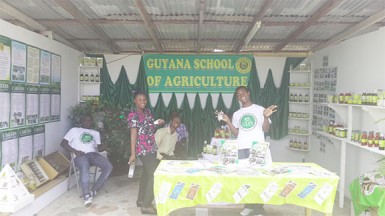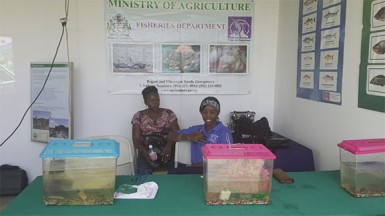Small scale or family farms invest over $50 billion annually in Guyana, Minister of Agriculture Dr Leslie Ramsammy said yesterday as he launched Agriculture Month.
The minister outlined that cash crop farmers spend in excess of $10 billion and the same applied for artisanal fishermen, as he addressed stakeholders and students at the Guyana School of Agriculture.
He said family farming was still the backbone of agriculture development in Guyana and for that small scale farms had to be commended for their continuous hard work to improve industry standards and increase the use of technological advancements. Ramsammy stated that family farms prospered in Guyana because people recognised the profitability in family farming and the solid employment creation it fostered.

He said that without the continuous investment of human capital it would be impossible to build agriculture development. Ramsammy lauded the contributions of small scale farms to the local market highlighting that it was the family farms that have really encapsulated the ‘Grow More Food’ and the ‘Eat What We Grow’ campaigns.
The minister stated that during Agriculture Month, which will run until the end of October the ministry will take part in a variety of exercises highlighting how to grow capabilities with sustainable technologies. He said that currently the high cost of agriculture production stems from the need to use pesticides and fertilisers and one of the initiatives Guyana was seriously looking at on a trial basis was the use of bio-fertilisers.
Ramsammy stated that the ministry was moving ahead with bio-fertilisers in the sugar industry and if the trials were successful they could be used across the board. In July, the Guyana Sugar Corporation (GuySuCo) had acknowledged that over 50 hectares of cane fields were being treated using bio-fertilisers in an effort to cut costs and work toward sustainability.

The minister spoke about the need to transform and to aggressively think about sustainable measures. He noted that two thirds of the world’s agriculture lands were severely degraded or under pressure from total degradation.
Ramsammy stated that mechanisation was the wave of the future and would need to be applied even at the family farming level. He stated that almost 100 per cent of the rice sector was mechanised and sugar was still in pursuit of large-scale mechanisation by 2017.
Speaking directly to the students in the audience, the minister asked them to think ahead as their ideas would see the future development of Guyana’s agriculture sector.
He said sustainable farming could be paired with export markets that Guyana has only now begun to realise exists.
Ramsammy highlighted once again that Guyana’s annual food import was anywhere from US$200 million to US$250 million. He said that for last year alone Guyana imported over US$2 million in carrots, while Trinidad imported US$3 million.
He said that with Guyana’s foray into corn and soya beans production, its food import bill could be drastically reduced in the next few years.
General Manager of the New Guyana Marketing Corporation Nizam Hassan gave a presentation on the role of youth in continued agriculture development in Guyana. Hassan said nutrition security needed to be realised separately from food security and value-added production had to become an integral part of agriculture development.
The head of the GMC said furniture and fuel were value-added ideas that would be expanded in the years to come and that the GSA was fundamental in generating the ideas to see value added realised.
Booths lined the grounds of the school where various agriculture departments showcased their current projects. The GSA’s booth showcased dozens of products that were conceptualised at the school and have been put into production.
The Fisheries Department had on display three species of fish that are currently being farmed at the school. The Faculty of Agriculture and Forestry of the University of Guyana was also present.





